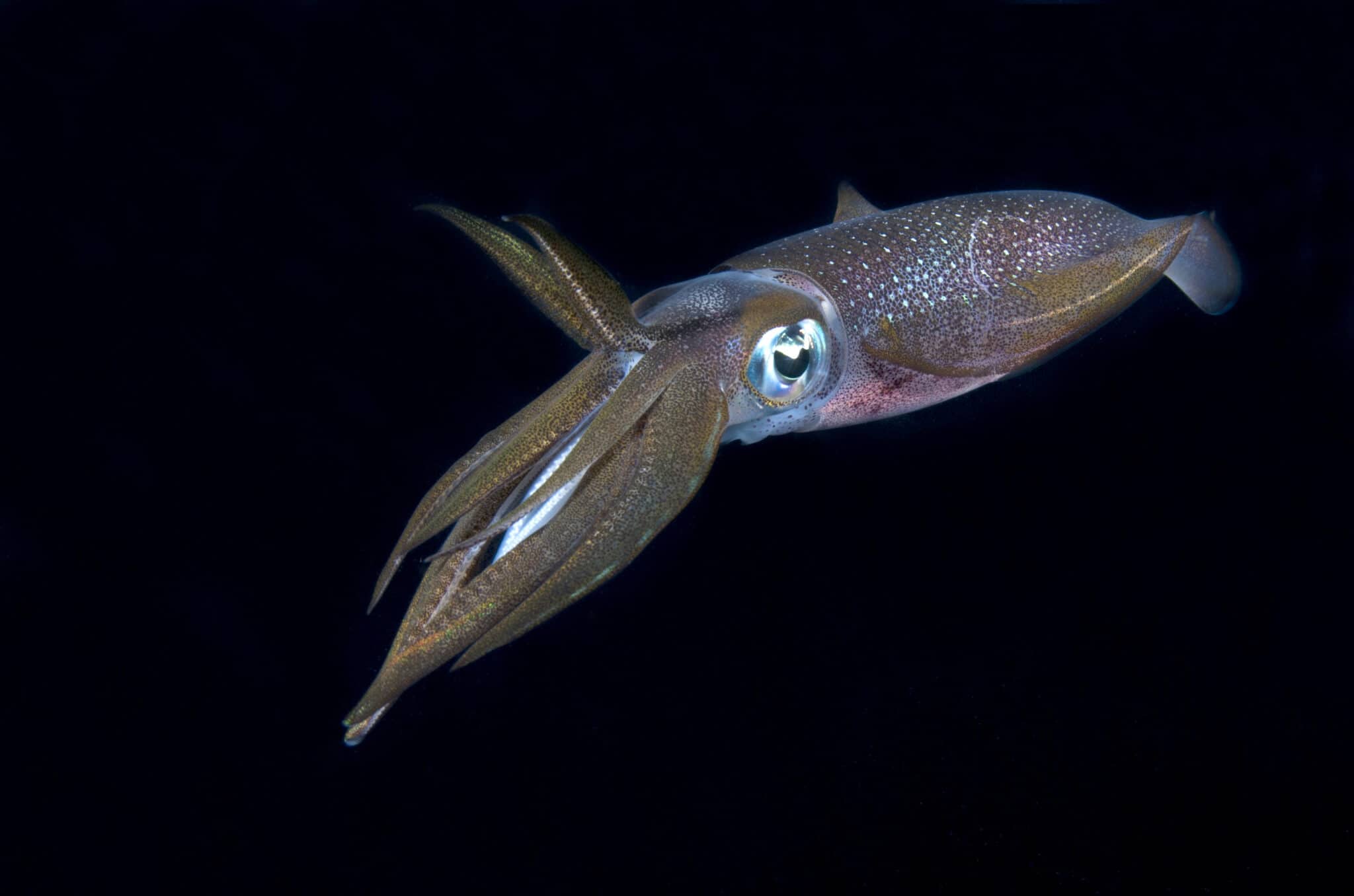Wizards of the Deep – The Remarkable Vision of Squid
 In the deep ocean, where sunlight barely penetrates, lives an extraordinary group of creatures—cephalopods, such as squids, octopuses, and cuttlefish. These marine animals possess a remarkable visual system, allowing them to perceive their environment in ways that challenge our understanding. Their vision is uniquely adapted to detect colors at various depths, exploit chromatic aberration for clarity, and see clearly even in extremely low-light conditions.
In the deep ocean, where sunlight barely penetrates, lives an extraordinary group of creatures—cephalopods, such as squids, octopuses, and cuttlefish. These marine animals possess a remarkable visual system, allowing them to perceive their environment in ways that challenge our understanding. Their vision is uniquely adapted to detect colors at various depths, exploit chromatic aberration for clarity, and see clearly even in extremely low-light conditions.
Seeing Color Without Color Vision
Cephalopods have eyes fundamentally different from humans. Most cephalopods have only a single type of photoreceptor (monochromatic vision), meaning they don't perceive colors through RGB color receptors like humans. Yet, intriguingly, they can distinguish colors and even camouflage themselves by matching the colors and patterns of their surroundings.
The secret behind this remarkable ability lies in chromatic aberration—a phenomenon where different wavelengths of light focus at slightly different distances after passing through a lens. Cephalopods utilize this subtle difference to discern various colors by adjusting their eyes' focal point.
Color Perception at Different Depths
Sunlight entering the ocean decreases significantly as depth increases. Longer wavelengths, like reds and oranges, disappear first, followed by yellows and greens, leaving mainly blues and violets at deeper levels. Cephalopods are acutely sensitive to these changes and adjust their visual perception accordingly.
For instance, an octopus near the surface might distinguish a broad spectrum of colors, while the same species deeper in the ocean would adapt its vision primarily to blue hues, allowing them to blend seamlessly into their environment.
Vision in Extreme Low-Light Conditions
The deep ocean environment is near total darkness, yet cephalopods navigate, hunt, and evade predators with remarkable precision. Their eyes have evolved to be large and efficient at gathering the faintest light, with specialized photoreceptors optimized for extremely dim conditions.
Specifically, cuttlefish have W-shaped pupils, enabling them to adjust rapidly to changing light levels. Such adaptations ensure that cephalopods can detect prey and threats even with minimal available light.
Magical Camouflage Through Skin Adaptation
Cephalopods also possess extraordinary skin cells called chromatophores, allowing them to instantly change their skin color and patterns according to their surroundings. This instant camouflage depends heavily on their visual perception of subtle changes in light and color. This ability not only serves as protection from predators but also aids in effective hunting strategies.
The visual capabilities of cephalopods represent one of nature's most sophisticated optical systems. Using a single photoreceptor to detect color through chromatic aberration, adapting vision across various depths, and exceptional low-light vision showcase why cephalopods are indeed the wizards of the deep. Studying their visual system inspires advances in artificial vision technologies, camera systems, robotics, and biomimicry.
Exploring the world through the eyes of these enigmatic creatures opens a gateway to understanding one of the ocean's greatest mysteries.





